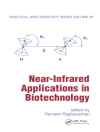Wie lässt sich die Wirkstoffentwicklung durch den zweckgerichteten Einsatz der Chemoinformatik beschleunigen und effektivieren? Ausgewiesene Fachleute – sowohl aus großen pharmazeutischen Unternehmen als auch aus hochspezialisierten Startup-Firmen – demonstrieren Ihnen, welche verfügbaren Programme sich für welche Probleme eignen und wie man in der Praxis Schwierigkeiten begegnet. Sie wenden sich dabei nicht an Softwareentwickler, sondern an Anwender aus allen Bereichen der pharmazeutischen Forschung und medizinischen Chemie.
قائمة المحتويات
Introduction
VIRTUAL SCREENING
Chemoinformatics in Lead Discovery
Computational Chemistry, Molecular Complexity and Screening Set Design
Algorithmic Engines in Virtual Screening
Strengths and Limitations of Pharmacophore-Based Virtual Screening
HIT AND LEAD DISCOVERY
Enhancing Hit Quality and Diversity Within Assay Throughput Constraints
Molecular Diversity in Lead Discovery: From Quantity to Quality
In Silico Lead Optimization
DATABASES AND LIBRARIES
WOMBAT: World of Molecular Bioactivity
Cabinet – Chemical And Biological Informatics Network
Structure Modification in Chemical Databases
Rational Design of GPCR-specific Combinational Libraries Based on the Concept of Privileged Substructures
CHEMINFORMATICS APPLICATIONS
A Practical Strategy for Directed Compound Acquisition
Efficient Strategies for Lead Optimization
Chemoinformatic Tools for Library Design and the Hit-to-Lead Process: A User’s Perspective
Application of Predictive QSAR Models to Database Mining
Drug Discovery in Academia – a Case Study
عن المؤلف
Tudor I. Oprea is Professor of Biochemistry and Molecular Biology and Chief, Division of Biocomputing at the University of New Mexico School of Medicine, Albuquerque (USA). He was born in Timisoara (Romania) where he did all his studies including his Ph.D. thesis under the supervision of Francisc Schneider. He was a post-doctoral fellow at Washington University with Garland Marshall, and Los Alamos National Laboratory with Angel Garcia. He worked six years at Astra Zeneca in Mölndal (Sweden), before moving to New Mexico as full Professor in 2002. He received the Hansch Award from the QSAR and Modeling Society in 2002. He is interested in chemoinformatics, virtual screening, QSAR, and lead and drug discovery.












